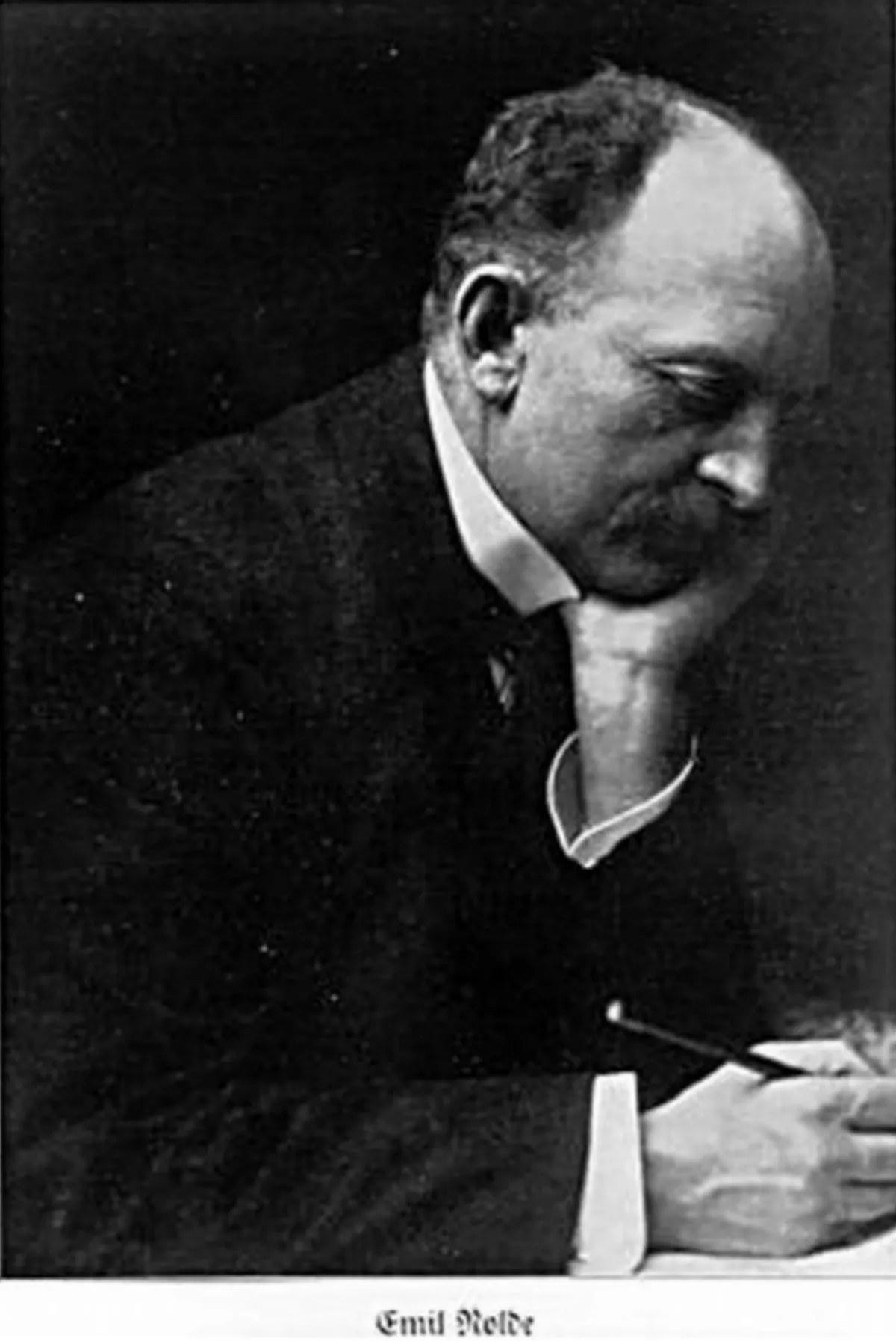 1.
1. Emil Nolde was one of the first Expressionists, a member of Die Brucke, and was one of the first oil painting and watercolor painters of the early 20th century to explore color.

 1.
1. Emil Nolde was one of the first Expressionists, a member of Die Brucke, and was one of the first oil painting and watercolor painters of the early 20th century to explore color.
Emil Nolde is known for his brushwork and expressive choice of colors.
Emil Nolde's watercolors include vivid, brooding storm-scapes and brilliant florals.
Emil Nolde was born as Hans Emil Hansen, near the village of Nolde, in the Prussian Duchy of Schleswig.
Emil Nolde realized his unsuitability for farm life, and that he and his three brothers were not at all alike.
Emil Nolde spent his years of travel in Munich, Karlsruhe and Berlin.
Emil Nolde was a drawing instructor at the school of the Museum of Industrial and Applied Arts in St Gallen, Switzerland, from 1892 to 1898.
Emil Nolde eventually left this job to finally pursue his dream of becoming an independent artist.
Emil Nolde married Danish actress Ada Vilstrup in 1902, and moved to Berlin, where he would meet collector Gustav Schiefler and artist Karl Schmidt-Rottluff, both of whom would advocate his work later in life.
Emil Nolde became a member of the revolutionary expressionist group Die Brucke, of Dresden, in 1906, upon the group's invitation.
Emil Nolde was a member of the Berlin Secession from 1908 to 1910, but was then excluded owing to a disagreement with the leadership.
Emil Nolde exhibited with Wassily Kandinsky's Munich-based group Der Blaue Reiter in 1912; by this time he had achieved some fame, and was able to support himself through his art.
Emil Nolde was a supporter of the National Socialist German Workers' Party from the early 1920s, having become a member of its Danish section.
Emil Nolde expressed anti-semitic, negative opinions about Jewish artists, and considered Expressionism to be a distinctively Germanic style.
Emil Nolde died in Seebull, now part of Neukirchen, in 1956.
Apart from paintings, Emil Nolde's work includes many prints, often in color, and watercolor paintings of varied subjects.
Emil Nolde named a wartime series of 1300 works in watercolor on Japanese paper "Unpainted Paintings", made in the shadow of Hitler's decree.
Emil Nolde, who grew up a farmer's son in a small, religious community near the German-Danish border, was left with lasting impressions of Judeo-Christian stories after reading the Bible in its entirety.
Emil Nolde's most important print, The Prophet, is an icon of 20th-century art.
In recent years, Emil Nolde's paintings have achieved prices of several million US dollars, in auctions conducted by the leading international auction houses.
Emil Nolde's work has become the focus of renewed attention after a painting entitled Blumengarten from 1917, which now hangs in the art museum Moderna Museet, Stockholm, Sweden, and has been valued at US$4 million, was discovered to have been looted from Otto Nathan Deutsch, a German-Jewish refugee whose heirs, including a Holocaust survivor, are asking for its return.